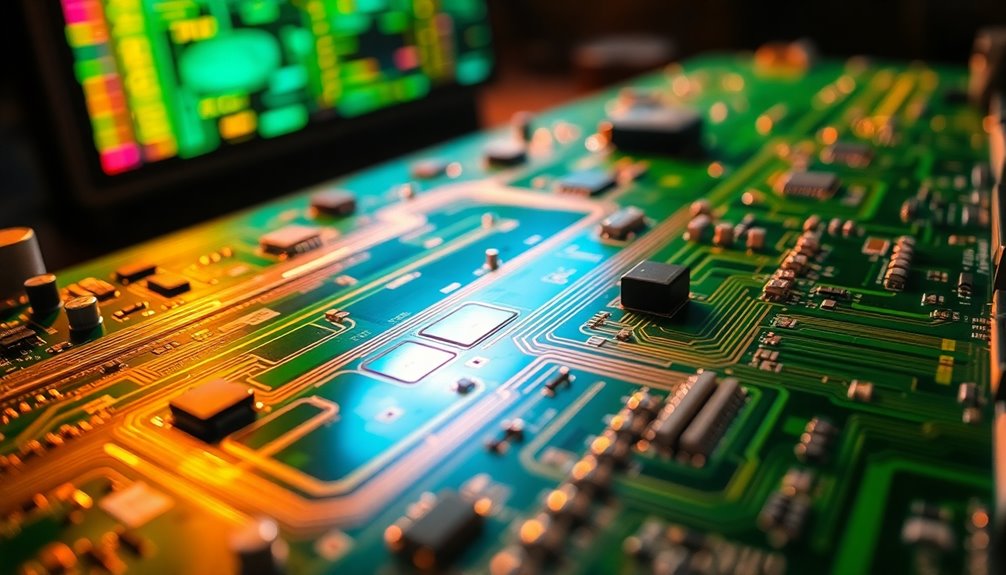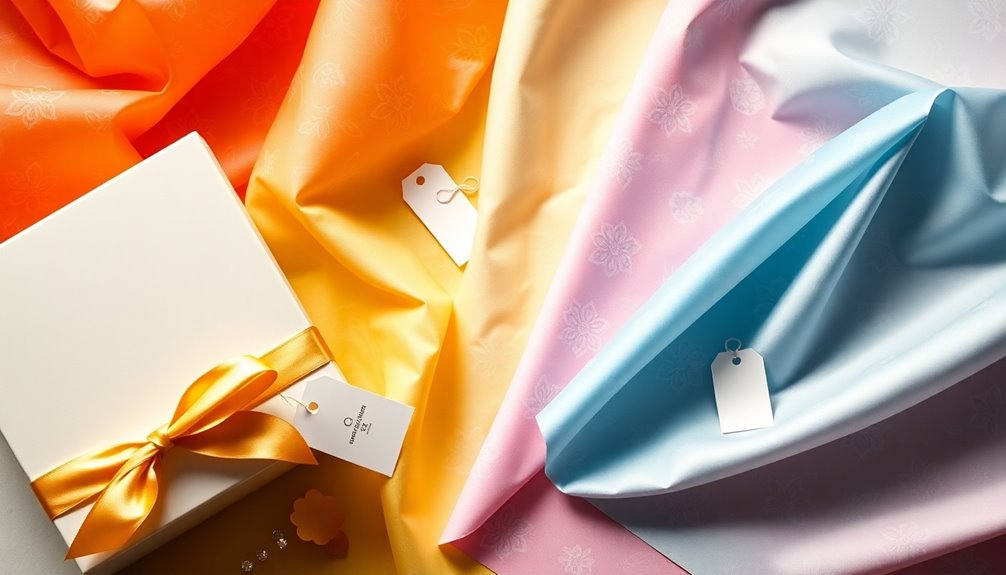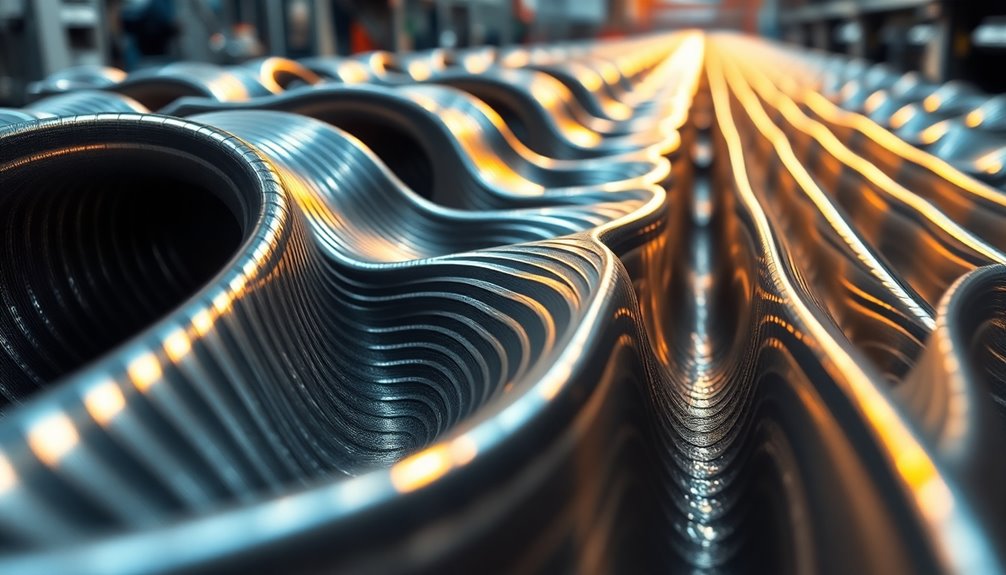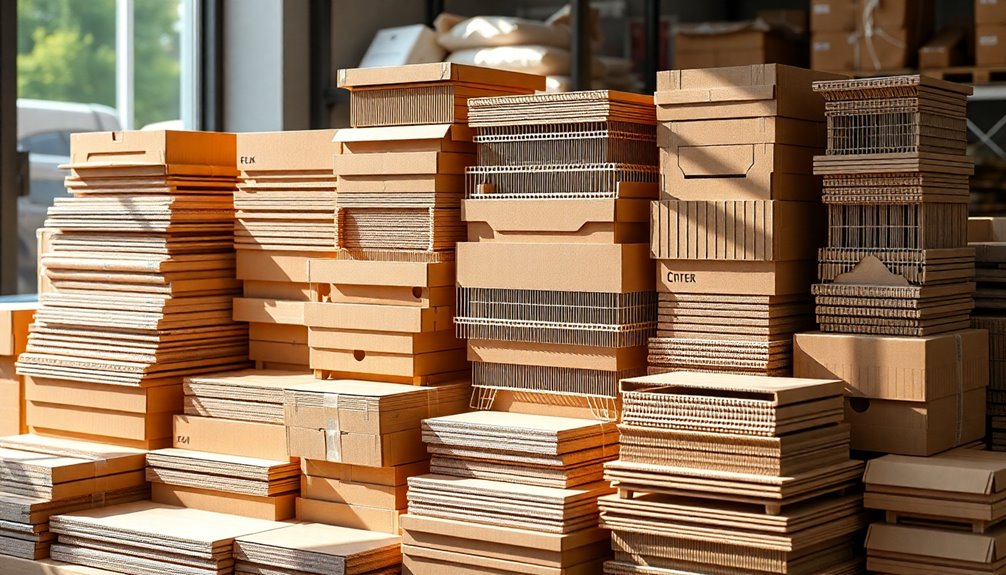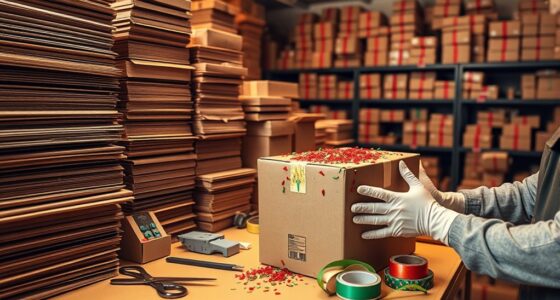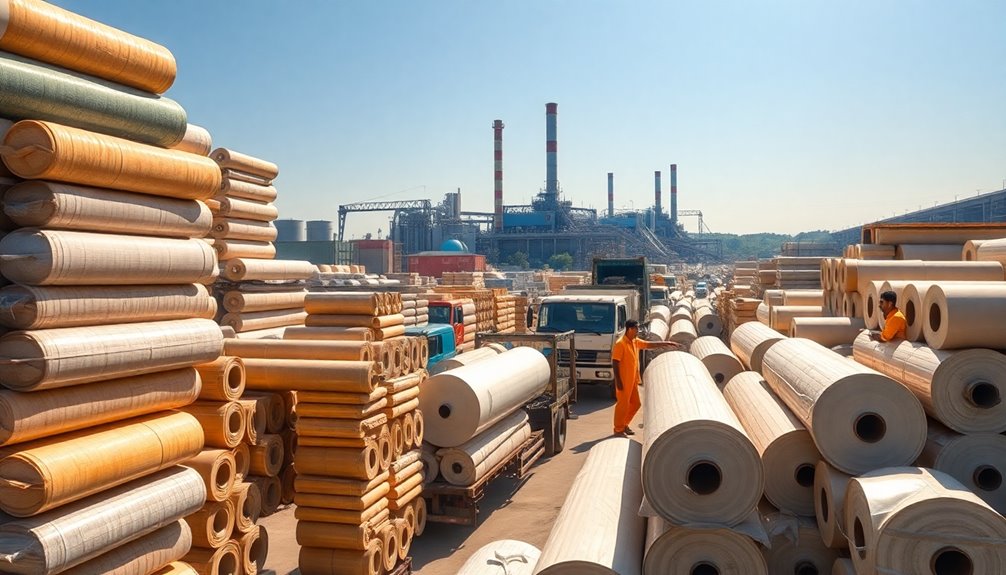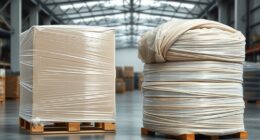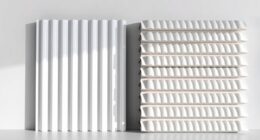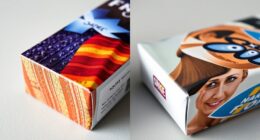IML, or in-mold labeling, transforms packaging by embedding high-quality labels directly into molded plastic products. There are four key reasons to evaluate it. First, IML labels add durability against scratches and moisture. Second, they align with eco-friendly practices, as they're made from recyclable materials. Third, the market for IML is expected to grow appreciably due to increasing consumer demand for attractive and sustainable packaging. Finally, integrating the labeling process reduces production costs while enhancing product appeal. If you're curious about how IML can impact your business or future packaging trends, there's more to uncover.
Key Takeaways
- In-mold labeling (IML) integrates labels during plastic molding, resulting in a seamless and high-quality finish without additional labeling steps.
- IML labels are durable, made from materials like polypropylene or polyethylene, offering resistance to scratches, moisture, and UV light.
- The IML process enhances sustainability by using recyclable materials and reducing waste, aligning with environmental regulations.
- Market growth for IML is projected at a CAGR of 6.5% driven by demand for sustainable and visually appealing packaging solutions.
- IML reduces production costs by eliminating extra labeling steps, resulting in long-term savings and higher product appeal.
Definition of IML
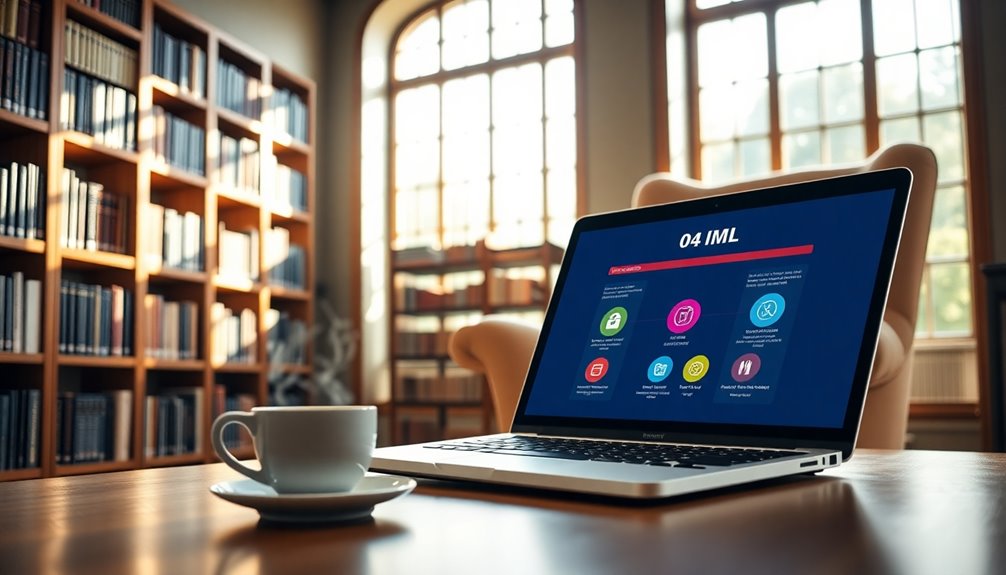
In recent years, in-mold labeling (IML) has emerged as a revolutionary manufacturing process that integrates labels directly into plastic packaging during the molding phase. This innovative approach involves placing pre-printed labels into molds before injecting or blowing molten plastic. As a result, you get a seamless, high-quality finish without the need for secondary labeling, which saves time and enhances efficiency.
IML labels are typically made from materials like polypropylene (PP) or polyethylene (PE) synthetic paper, utilizing a special hot-melt adhesive to guarantee durability and solid adhesion. This process not only enhances the aesthetics of your plastic packaging but also greatly boosts its functionality.
One of the standout features of IML is its superior durability. The labels resist scratches, moisture, chemicals, and UV light, making them ideal for food and beverage packaging.
Additionally, the manufacturing process contributes to the recyclability of the products, as the labels become part of the plastic item itself. By choosing IML, you're not just enhancing your packaging; you're also embracing a more efficient approach that aligns with modern environmental standards.
Environmental Benefits

Environmental benefits of in-mold labeling (IML) are significant, making it a smart choice for sustainable packaging solutions.
IML labels are crafted from recyclable materials like polyolefin, which integrate easily into recycling streams. This enhances waste reduction efforts since the in-mold labeling process eliminates secondary pollution by avoiding the peeling of labels and unnecessary printing.
Moreover, IML boosts hygiene and safety in packaged products, as the label becomes part of the container, minimizing contamination risks.
You'll also find that it aligns with evolving environmental protection regulations, particularly in regions like China, promoting better packaging practices.
Market Growth Trends

The in-mold labeling (IML) market is on the rise, with projections showing a compound annual growth rate (CAGR) of 6.5% from 2023 to 2030. This growth is primarily driven by increasing demand for sustainable packaging solutions.
Here's why IML technology is gaining traction:
- Consumer Preference: More consumers are seeking visually appealing products, pushing brands to adopt IML for attractive packaging.
- Technological Advancements: Innovations in printing and molding processes are making IML applications more effective and versatile.
- Diverse Applications: IML is expanding in sectors like food and beverage, automotive, and consumer goods, showcasing its adaptability.
The rise of e-commerce is also fueling this market growth trend. As online retailing continues to flourish, the need for effective and attractive packaging solutions becomes even more critical.
IML technology not only meets these needs but also aligns with the growing focus on sustainable packaging. As a result, you can expect to see more brands embracing IML to enhance their product appeal and meet consumer demands.
The future of IML looks bright as it addresses the evolving landscape of consumer preferences and industry needs.
Cost Efficiency and Advantages
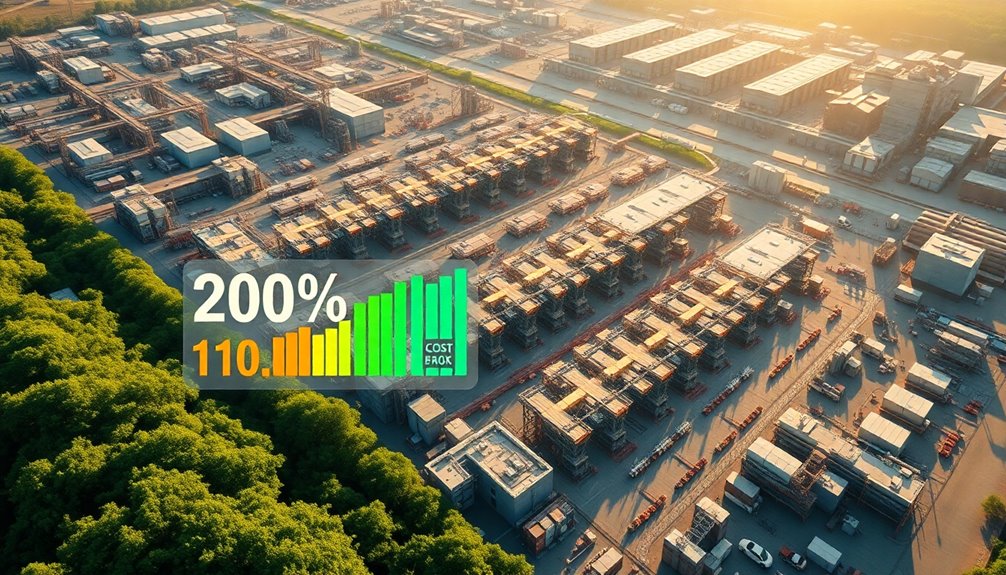
Cost efficiency is one of the standout advantages of in-mold labeling (IML) technology. By integrating the labeling process with manufacturing, you greatly reduce production costs. This approach eliminates extra labeling steps and minimizes labor expenses, resulting in economic benefits that last. Although initial setup costs for IML equipment can be high, the long-term savings from reduced waste and enhanced recycling capabilities make it worthwhile for mass production.
Here's a quick overview of the cost efficiency and advantages of IML:
| Advantage | Description | Impact on Costs |
|---|---|---|
| Reduced Waste | Less material waste during production | Lowers overall production costs |
| Durability Advantages | Labels are fused with products, resisting peeling | Decreases replacement costs |
| High-Quality Graphics | Allows intricate designs that enhance product appeal | Boosts sales, maximizing profit |
With IML, you benefit from high-quality graphics while maintaining cost-effectiveness. The durability advantages of IML labels guarantee longevity even in harsh conditions, further enhancing your bottom line. Embracing IML technology positions your products for success in a competitive market.
Frequently Asked Questions
What Is the Purpose of IML?
The purpose of in-mold labeling (IML) is to enhance your product's appeal and streamline production.
By integrating labels during manufacturing, you achieve a seamless finish that eliminates extra labeling steps, saving time and reducing costs.
IML labels are durable, resistant to various elements, and improve recyclability, aligning with environmental standards.
This method not only boosts brand visibility but also guarantees your products maintain their quality and aesthetic appeal throughout their lifecycle.
What Does IML Mean in Packaging?
In packaging, IML stands for in-mold labeling, a process where labels are integrated directly into the plastic during manufacturing.
You benefit from this method because it creates a strong bond between the label and the container, enhancing durability and visual appeal.
IML labels resist scratches, moisture, and UV light, making them ideal for food and beverage products.
Plus, the process reduces production costs and allows for intricate designs that boost branding.
What Is the Process of IML?
The IML process involves placing pre-printed labels into molds before the plastic is shaped.
You can choose between injection molding and blow molding.
In injection molding, you feed thermoplastics into the machine, insert the label, then inject and cool the plastic to create a single product.
For blow molding, you extrude heated plastic, insert the label, and use air to shape the container.
This fusion enhances both aesthetics and durability for your products.
What Is the in Mold Labeling Process?
The in-mold labeling process involves placing a pre-printed label into a mold before injecting or blowing plastic.
You start by selecting the right machine and feeding thermoplastics into it. Then, you insert the label and inject the heated material, which envelops the label.
After cooling, the final product is ejected, seamlessly integrating the label into the plastic. This method not only enhances product appearance but also boosts manufacturing efficiency by eliminating additional labeling steps.
Conclusion
To sum up, IML offers a sustainable solution that benefits both the environment and your business. By embracing this innovative approach, you can tap into growing market trends while enjoying significant cost savings. With its efficiency and eco-friendly advantages, IML not only enhances your product but also aligns with today's consumer preferences for sustainability. So, if you're looking to improve your operations and make a positive impact, IML is definitely worth considering for your future endeavors.

